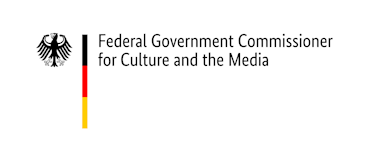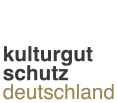Due diligence requirements relating to placing on the market for commercial reasons
In addition to the general due diligence requirements, special due diligence requirements also apply where cultural property is placed on the market for commercial reasons (Sections 42 et seqq. of the Act on the Protection of Cultural Property – Kulturgutschutzgesetz, KGSG).
Placing on the market for commercial reasons
To interpret the “commercial” parameter, we must refer to the customary definition of what constitutes a business. A business is any permitted, autonomous and externally recognizable activity that is conducted systematically, over a certain period of time and for profit. From this definition, it is clear that collectors, for example, who occasionally sell a cultural artefact when restructuring their collection, are not commercial art dealers. The same goes for business owners whose business activity is not the buying and selling or procuring of cultural property but who simply, from time to time, sell a work of art that is owned privately by themselves or their business.
Exceptions in specific areas
The commercial book trade, excluding the antiquarian market, and commercial trade in visual and audio media are exempt from the specific due diligence requirements for commercial trade in cultural property (Section 42 (2) nos. 1 and 2 KGSG). The special requirements likewise do not apply to placing on the market of cultural property that has a financial value of no more than EUR 2,500 and that does not (cumulatively) constitute archaeological cultural property (Section 42 (3) KGSG). Special provisions may apply to archaeological coins if they constitute mass-produced objects.
General due diligence requirements
In addition to the general due diligence requirements (Section 41 KGSG), Section 42 KGSG states that commercial dealers are obliged:
1. to establish the name and address of the alienor, deliverer, acquirer or ordering party;
2. to provide a description and an illustration that can be used to establish the identity of the cultural property;
3. to examine the provenance of the cultural property;
4. to examine documents proving the lawful import and export;
5. to examine bans and restrictions regarding import, export and trade;
6. to examine whether the cultural property is registered in publicly accessible registers and databases; and
7. to obtain a written or electronically transmitted declaration of the deliverer or alienor stating that he or she is authorized to have the cultural property at his disposal.
The scope of the due diligence requirement as set out in the above duties (nos. 3 to 6) is essentially limited in each specific case by the probable cost. This is measured by ease of access to the information that needs to be checked, for example, and by financial criteria.
Increased due diligence requirements
The requirements are stricter, however, in the case of cultural property with a specific provenance – whatever its value. Prior to placing an affected cultural item on the market, intensive checks have to be conducted in the following three exhaustively listed feature groups:
1. Cultural property proven or assumed to have been taken from its original owner due to National Socialist persecution (Section 44 no. 1 KGSG);
2. Cultural property originating from areas for which the International Council of Museums has published a Red List of endangered cultural property (Section 44 no. 2 KGSG), and
3. Cultural property that is prohibited by a regulation of the European Union from being imported, exported or placed on the market (Section 44 no. 3KGSG). These are currently the 2013 Syria Regulation and the 2003 Iraq Regulation. This provision does not apply in respect of the general Regulation on the introduction and the import of cultural goods from third countries to the European Union, which has been coming into force on staggered dates since 2019, because Section 44 no. 3 KGSG seeks only to protect especially endangered types of cultural property.
The reason for the increased requirements is that otherwise it would hardly be possible to achieve increased attention for pieces with the described special features in low price ranges.
If no further information can be obtained despite considerable effort, the due diligence requirements will be deemed fulfilled.
Reduced due diligence requirements
The KGSG sets reduced due diligence requirements for commercial trading if someone acquires the cultural property directly from its author or creator and then sells it on (Section 43 KGSG). In this case, only the general due diligence requirements must be met, plus the requirements of Section 42 (1) no. 1 (name and address of the seller, deliverer, acquirer or ordering party) and no. 2 (description and illustration of the cultural property). This is helpful, above all, to the primary art market (sales at galleries or direct from an artist’s studio)..
Record-keeping and requirement to provide information
Compliance with the due diligence requirements for businesses must be documented in line with appropriate record-keeping and retention requirements (Section 45 KGSG). To ensure that these documentation obligations are met, the Act imposes a requirement to provide information to the competent authority (Section 46 KGSG).

